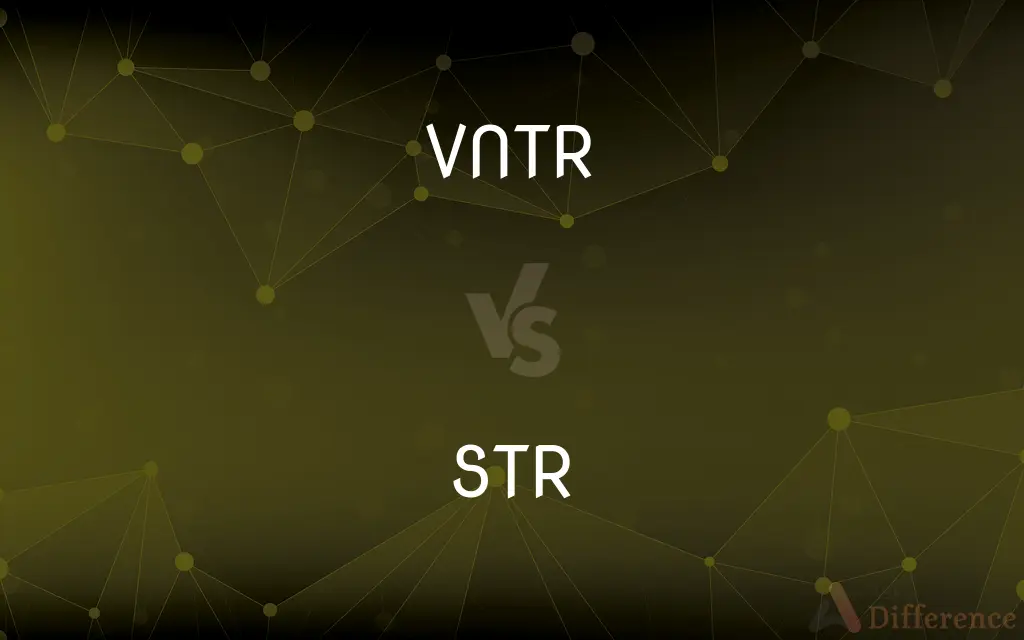Within the intricate architecture of deoxyribonucleic acid (DNA) lie regions of remarkable variability, known as polymorphic loci. These areas are crucial for understanding genetic diversity, individual identification, and evolutionary relationships. Among the most studied polymorphic regions are Short Tandem Repeats (STRs) and Variable Number Tandem Repeats (VNTRs). These repetitive DNA sequences offer unique insights into an individual’s genetic makeup. Let’s delve into the characteristics of each, highlighting their structural differences and applications.
What are Short Tandem Repeats (STRs)?
STRs, sometimes referred to as microsatellites, are short DNA sequences, typically ranging from two to six base pairs in length, that are repeated in tandem at specific loci within the genome. These repeats are ubiquitous, scattered throughout the chromosomes of most organisms. What distinguishes STRs is the high degree of allelic variation observed in the number of repeats at a given locus. This variation arises from slippage during DNA replication, where the polymerase can either add or skip a repeat unit, leading to different allele lengths.
The simplicity of the repeat units and the abundance of STR loci make them ideal markers for genetic analysis. The number of repeats at each STR locus is inherited from parents, and the combination of alleles across multiple loci creates a unique genetic profile for each individual, barring identical twins. Imagine a fingerprint, but for DNA.
Applications of STR Analysis:
The application of STR analysis is widespread due to its precision and efficiency. Here are some key areas where STRs play a crucial role:
- Forensic Science: STR analysis is the cornerstone of modern forensic DNA profiling. By analyzing multiple STR loci, forensic scientists can generate a DNA profile that is highly specific to an individual. This is used to identify suspects, exonerate the wrongly accused, and link individuals to crime scenes. The probability of two unrelated individuals having the same STR profile is extremely low, making it a powerful tool in criminal investigations.
- Paternity Testing: Determining biological parentage is another primary application of STRs. Since individuals inherit one allele at each STR locus from each parent, comparing the STR profiles of a child and potential parents can confirm or exclude parentage with high accuracy.
- Genetic Genealogy: STR markers are used in genetic genealogy to trace ancestral lineages and identify relatives. By comparing STR profiles across individuals, genealogists can establish familial connections and uncover patterns of migration and ancestry.
- Disease Diagnosis: Although less common than in other applications, STRs are used in the diagnosis of certain genetic diseases, particularly those caused by expansion of repeat sequences. For example, Huntington’s disease is caused by an expansion of a CAG repeat within the huntingtin gene.
- Population Genetics: STRs are valuable tools for studying genetic diversity and population structure. By analyzing the distribution of STR alleles across different populations, researchers can gain insights into evolutionary history, migration patterns, and the relationships between different groups.
What are Variable Number Tandem Repeats (VNTRs)?
VNTRs, also known as minisatellites, are similar to STRs in that they consist of tandemly repeated DNA sequences. However, VNTRs differ significantly in the length of the repeat unit, which typically ranges from ten to hundreds of base pairs. These longer repeat units lead to a greater degree of polymorphism compared to STRs, with a wider range of allele sizes at each locus.
The mechanism of variation in VNTRs is similar to that of STRs, involving slippage during DNA replication. However, the larger size of the repeat units in VNTRs can result in higher mutation rates and greater instability, leading to more extensive allelic diversity. This diversity makes VNTRs powerful markers for genetic analysis, but also presents challenges in terms of data analysis and interpretation.
Applications of VNTR Analysis:
While STRs have largely supplanted VNTRs in many applications, VNTRs still hold relevance in certain areas. Here are some notable applications:
- Earlier DNA Fingerprinting: VNTRs were the original markers used in DNA fingerprinting, pioneering the field of forensic DNA analysis. Although STRs are now the preferred markers, VNTRs laid the foundation for the development of modern DNA profiling techniques.
- Genetic Research: VNTRs continue to be used in genetic research to study genome organization, recombination rates, and the evolution of repetitive DNA sequences. Their large size and high degree of polymorphism make them valuable for exploring complex genetic phenomena.
- Plant and Animal Breeding: VNTRs are used in plant and animal breeding programs to assess genetic diversity, track desirable traits, and improve breeding efficiency. By analyzing VNTR profiles, breeders can select individuals with favorable genetic characteristics for propagation.
- Mapping Complex Traits: VNTRs can be used as genetic markers to map complex traits, such as disease susceptibility or agricultural yield. By analyzing the association between VNTR alleles and phenotypic traits, researchers can identify genomic regions that influence these traits.
Key Differences Between STRs and VNTRs:
To summarize, the key distinctions between STRs and VNTRs lie in the size of the repeat unit and the resulting level of polymorphism. Here’s a concise comparison:
- Repeat Unit Length: STRs have short repeat units (2-6 base pairs), while VNTRs have longer repeat units (10-100+ base pairs).
- Polymorphism: VNTRs exhibit greater polymorphism due to their larger repeat units and higher mutation rates.
- Amplification: STRs are easier to amplify using PCR due to their smaller size, making them more amenable to high-throughput analysis.
- Data Analysis: STR data is generally easier to analyze and interpret compared to VNTR data due to the simpler allele distributions.
- Applications: STRs are widely used in forensics, paternity testing, and genetic genealogy, while VNTRs have broader applications in genetic research and breeding programs.
In conclusion, both STRs and VNTRs are invaluable tools for exploring the genetic landscape. While STRs have become the workhorse of modern DNA profiling due to their ease of use and precision, VNTRs continue to offer unique insights into genome structure and evolution. Understanding the properties of these repetitive DNA sequences is essential for unlocking the secrets hidden within our genetic code.










Leave a Comment